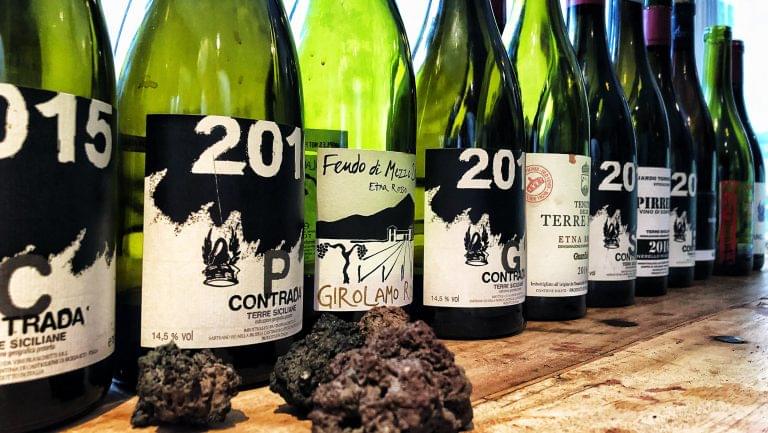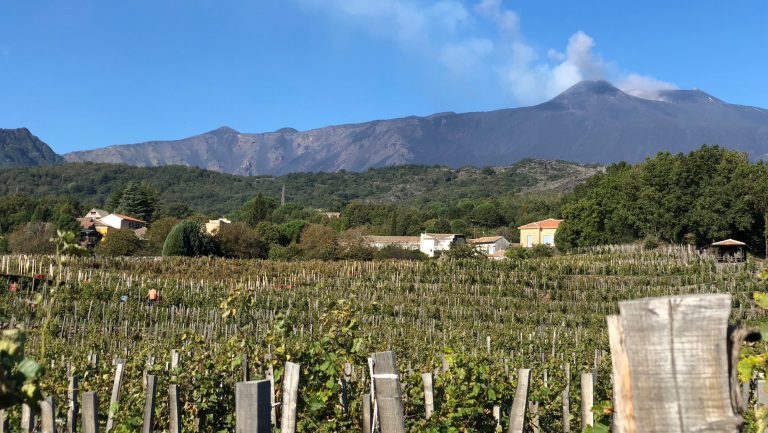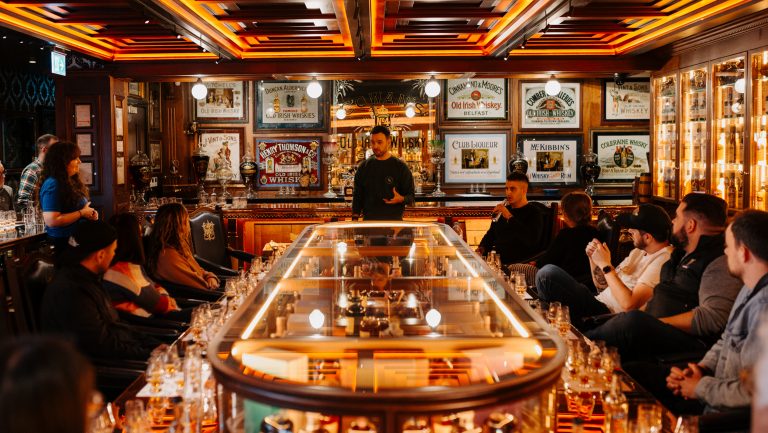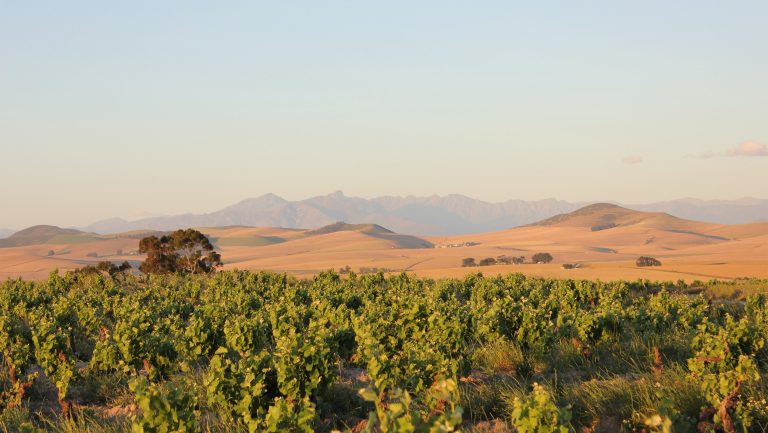Even though wine has been produced around Mount Etna for centuries, it’s only in the last 30 years that there’s been a concerted push to make wines of high quality here, and the effort has exploded in terms of both production and investment—increasing from just a handful of labels to more than 160 today. Styles and philosophies are proliferating as the region seeks to define itself. And on the buyer side, somms and retailers are trying to get a better understanding of what an Etna wine is—or should be—and how to communicate its quintessence to consumers.
As a brand ambassador for Andrea Franchetti’s Passopisciaro winery, I frequently see buyers getting bogged down by the specifics of whether wines are labeled Etna Denominazione di Origine Controllata (DOC) or Terre Siciliane IGT when they try to categorize them for customers. What’s often missing from the conversation is an awareness of how the territorial lines of the current DOC laws have been drawn, and the ability to look beyond appellation status to identify the high quality level and distinctive characteristics of wines that come from vineyards on the volcano.
To truly understand Mount Etna wines, it’s crucial for buyers to learn more about the characteristics that distinguish them from other Sicilian wines. It’s also important to look at these wines in a context that extends beyond DOC and more broadly encompasses the unique aspects of the terroir of the volcano itself. This deeper level of understanding can help buyers make more strategic decisions about how to organize the wines on wine lists and retail shelves.

Don’t miss the latest drinks industry news and insights. Sign up for our award-winning newsletters and get insider intel, resources, and trends delivered to your inbox every week.
Examining Etna Wines
When I last sat down to count, I realized I’d been to Mount Etna nine times in the last four years. Something about my first visit to the volcano, in 2014, was enough to make me quit a desk job at Sotheby’s and immediately book a flight to start a job I’d been offered with Passopisciaro. There’s something magical not just about this place—which is breathtaking, with its rough lava boulders and countless grapevines climbing in terraces up the mountainside—but also about this moment in the region’s winemaking history; it’s an incredible opportunity to share Mount Etna’s story, to spread the word about its volcanic terroir–driven wines and to make them accessible to global markets.
Throughout my time with Passopisciaro, I’ve sought to understand as much as possible what makes this wine region so distinctive and then to communicate that understanding to buyers and consumers back home in the U.S. So I’ve spent a lot of time thinking about what we’re talking about when we talk about Etna wine, and to what extent we should be focusing on an appellation status—or the place where the wine is made. As I travel around the U.S. promoting the wines of Passopisciaro, I find myself addressing this issue often because although only one of our wines is specifically listed as an Etna Rosso DOC, the winery itself is considered a pioneer of the new Etna wine movement.
The highest active volcano in Europe, Mount Etna sits at the division between the African and Eurasian tectonic plates, so that a high level of magma activity occurs, with pressure building up and releasing at various places across the surface of the volcano—eruptions can occur anywhere, not just from the summit craters. The result is an intricate array of terroirs, developed from the exposition of individual sites, variations in altitude, and a mix of lava flows comprising different mineral and soil compositions that have layered on top of one another over millennia. Much of the distinctiveness of Etna wines stems from the development of these various terroirs, which are referred to in the region as contradas, or contrade, in Italian.

Viticulture and winemaking have remote origins on Mount Etna, with written reports dating to the time of the ancient Greeks. In more modern history, starting from around the 18th century, the slopes of the lowest third of the 11,000-foot-high volcano were planted in terraces. These vineyards were cultivated steadily until the Second World War, when the labor force needed to work the land was devastated. The demand for bulk wines from Sicily dwindled after the war as well, leaving little economic motivation to maintain the volcano’s more labor-intensive vineyard sites. As a result, when the DOC regulations were drawn up in 1968, they were predominantly based on the locations of active sites rather than sites that might produce the highest-quality wines, according to in-depth scientific research.
Thinking Outside the Appellations
Things began to change again in the late 1980s and early 1990s, with producers like Benanti, Calabretta, and Ciro Biondi reinvesting in their family properties, and in the beginning of the 2000s, when the “outsiders”—Andrea Franchetti, Frank Cornelissen, and Marco de Grazia—arrived. An enthusiasm for producing high-quality wines from the volcano’s ancient vines was ignited.
This new wave of quality-minded producers set to work to revive old vine material left in collapsed terraces all over the mountain’s face, up to 3,300 feet. These old vines are among the factors that help set Mount Etna wines apart from others on Sicily. The new winemakers were also among the first to embrace and repackage the ancient names used to designate various zones on Mount Etna for generations, applying them to “cru” production zones. In some cases, a number of producers may work from different vineyards within the same contrada. As the area continues to evolve, new generations of producers are starting their own projects, and they’re increasingly releasing wines that are cultivated from the areas designated by these ancient territory names and nuanced articulations of terroir.
And yet many of the wines made on Mount Etna are not technically included in the DOC, especially those at higher elevations on the northern face of the volcano, where the grapes are late to ripen. For example, on the southern and eastern faces, the upper limits of the DOC reach 1,000 meters, or 3,300 feet, while on the northern side, the limit is at 2,625 feet.

In some places, the DOC’s boundary even bisects a contrada, as it does in Guardiola, where Passopisciaro’s main property lies. The domain is literally split by the line that delimits the appellation, so some vines are DOC while others are not. Passopisciaro has decided that the best way to manage this situation is for the winery to bottle all of its contrada—or single-vineyard—wines as Terre Siciliane IGT, reasoning that the ones that can be designated Etna DOC are not necessarily of higher quality than those that fall outside the appellation—for example, the Contrada S (Sciaranuova), which is situated at almost 2,800 feet, and Contrada R (Rampante), at 3,300 feet.
And this conundrum is not unique to Passopisciaro. Many other producers on the volcano must bottle at least some of their wines similarly. Frank Cornelissen and Graci, for example, bottle a portion of their most sought-after wines as Terre Siciliane IGT. Cornelissen’s Magma Rosso IGP Terre Siciliane and Graci’s Quota 1000 Barbabecchi Terre Siciliane IGT are produced at the upper reaches of altitude on the northern face of the volcano; these wines are sought specifically for the elegance that the altitude brings to them, and they showcase Etna’s expressive terroir, revealing a combination of minerality, verticality, and ripeness that is a hallmark of the region.
The focus of winemakers has been exactly this—expressing the character of Etna, using the best vine material available, regardless of whether the vineyard sites are technically in the DOC. This includes historic producers like Benanti, who for the past 30 years has been making classic single-vineyard wines—such as Pietra Marina, Rovittello, and Serra della Contessa—but will soon be releasing a new tier of wines that focuses on specific contradas from all faces of the volcano (notably, for this article, all within the Etna DOC). Additionally, new winemakers like Vigneti Vecchio and Eduardo Torres Acosta have since their first vintages made sure to have at least one contrada in their limited lineups of artisanal wines, some within and some outside the DOC. Together, these focused articulations of terroir have raised the profile of the region as a whole.
I’m not making a case for extending the current DOC legislation; that’s a far more complicated political and commercial issue than I can attempt to tackle here. The case I’m making is that DOC law provides only a limited understanding of how and where vines are grown on the mountain, and that producers on Etna are less focused on whether or not a bottle can be labeled an Etna DOC than they are on making the best possible wine they can. This is what matters when talking about and selling Etna wines. There is a particular character that all wines on Etna share: Whether made from white or red grapes, indigenous or international varieties, the wines possess great structure, sapidity, minerality, and verticality, all of which combine with a bright, ripe fruit character that comes from the volcano’s position in the middle of the Mediterranean. Ultimately, it’s a dynamic place that is home to one of the most exciting regions for winemaking in the world, and we shouldn’t let labels get in the way of highlighting, communicating, and celebrating this unique terroir.

Dispatch
Sign up for our award-winning newsletter
Don’t miss the latest drinks industry news and insights—delivered to your inbox every week.
Sarah Bray, DipWSET, is a communications professional with a background in editorial and brand content creation, digital marketing, and event planning who focuses on wine. She’s currently the U.S. brand ambassador for Tenuta di Trinoro (Tuscany) and Passopisciaro (Mount Etna), as well as the European director of VinConnect, through which she liaises with top estates in Europe to develop their direct-to-consumer marketing channels. Bray is a founding member of the Bâtonnage Forum, a platform to discuss issues affecting women throughout the wine industry, and is part of the team that implements Sherryfest, an event that promotes the wines of Jerez to American audiences. She holds the highest-level recognition from the internationally renowned Wines & Spirits Education Trust—Level 4 Diploma in Wine and Spirits—and is a Master of Wine candidate.







